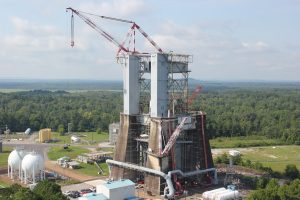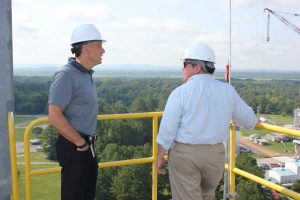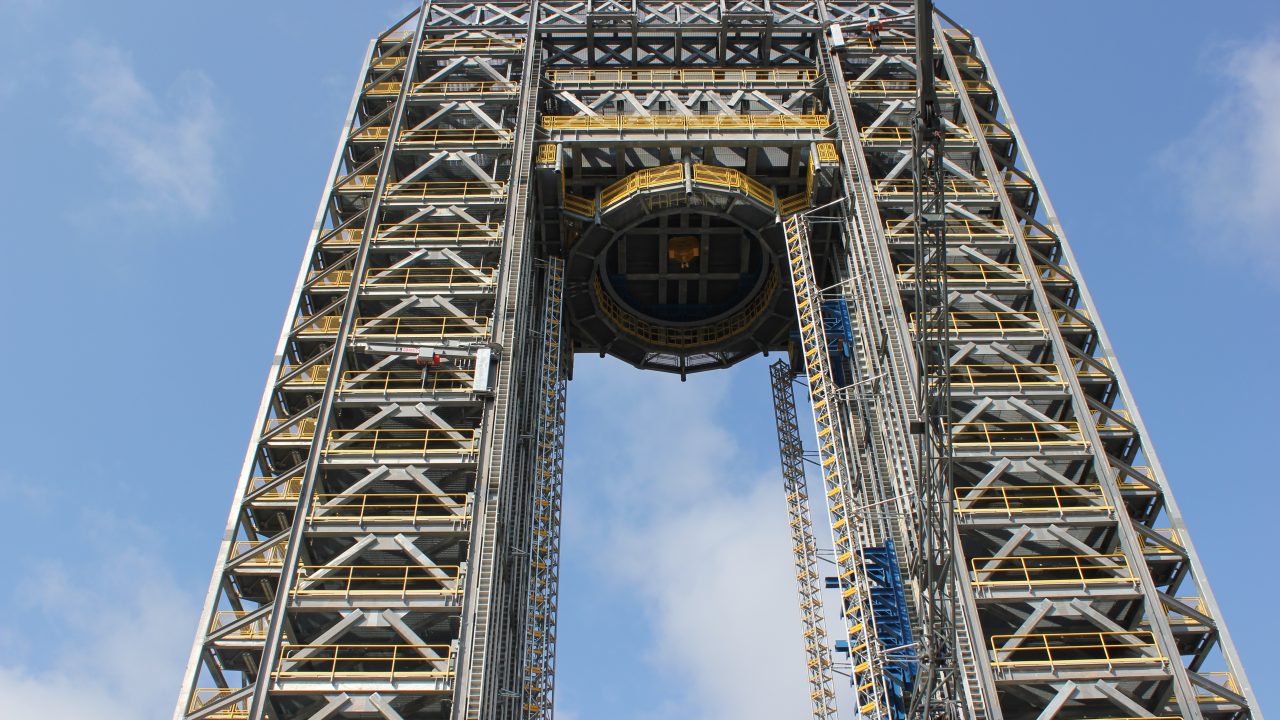By Claire Aiello
REDSTONE ARSENAL – NASA is making steady progress in its mission to send the Space Launch System into deep space – to the Moon and beyond. It will be the largest rocket to ever go to space, and that means the team needs bigger equipment for testing and preparation.
One of the most visible signs of this on Redstone Arsenal is the new SLS test stand. The massive structure stands 221 feet high, and is located next to the large stand where Dr. Wernher Von Braun’s team tested mighty F-1 Saturn rocket engines.

From the top of the SLS test stand, you get a great view of the structure that tested mighty F-1 Saturn rocket engines. (Photo: Claire Aiello)
During construction, workers dug down 17 feet to the bedrock to anchor in supports for the new stand, which will be used for structural tests on the Liquid Hydrogen tanks.
The tanks are built at the Michoud Assembly Facility in New Orleans. They are brought here by NASA’s Pegasus barge, formerly used to transport the Space Shuttle External Tank, but would you believe the barge wasn’t big enough to hold the SLS tanks? The barge was cut and ‘stretched’ then re-secured to hold the larger tank. Pegasus carries it up the Mississippi River, over to the Ohio River and then down the Tennessee River to Huntsville. The trip takes 15 to 20 days depending on the weather.

Left to right: Tim Garner of the NASA Stages Project Office talks with Mike Ward, the Chamber’s Senior VP of Government and Public Affairs. (Photo: Claire Aiello)
When the tank arrives at Redstone, a large transport vehicle takes it inland. It is housed indoors and then taken to the test stand, where two large cranes will lift it up and into place.
The stand contains a large ring that can be lowered for tests on structures of different sizes. Marshall Space Flight Center built the stand so it can be used for other purposes. There the stand will be used to apply “crushing” forces to the top and bottom of the SLS tank to replicate the forces the tank will experience on takeoff.



